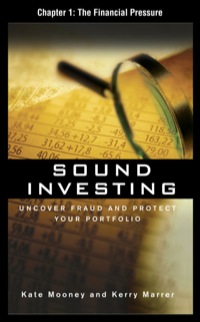








1. Record each of the transactions listed above. (If no entry is required for a particular transaction/event, select "No Journal Entry Required" in the first account field.) View transaction list View journal entry worksheet No Date Debit Credit 1 January 01 General Journal Cash Notes Payable (Long-term) 103,000 103,000 2 January 04 Cash 31,300 Accounts Receivable 31,300 January 10 14.000 Accounts Payable Cash 14,000 4 January 15 29,200 Salaries Expense Cash 29.200 5 5 January 30 Cash 65,300 130,300 Accounts Receivable Sales Revenue 195,600 6 January 30 Cost of Goods Sold 114,000 Inventory 114,000 7 January 31 Notes Payable (Long-term) Interest Expense Cash 1,476 515 1,991 2. Record the adjusting entries on January 31 for the above transactions. (If no entry is required for a particular transaction/event, select "No Journal Entry Required" in the first account field.) View transaction list View journal entry worksheet No Date General Journal Debit Credit 1 January 31 820 Depreciation Expense Accumulated Depreciation 820 2 January 31 2,156 Bad Debt Expense Allowance for Uncollectible Accounts 2,156 3 January 31 26,400 Salaries Expense Salaries Payable 26.400 4 January 31 8,300 Income Tax Expense Income Tax Payable 8,300 5 January 31 18,302 Notes Payable (Long-term) Notes Payable (Current) 18,302 3. Prepare an adjusted trial balance as of January 31, Year 1. Credit 4,256 Company A Adjusted Trial Balance January 31, Year 1 Accounts Debit Cash $ 165,909 Accounts Receivable 133,600 Allowance for Uncollectible Accounts Inventory 38,300 Land 70,300 Buildings 123,000 Accumulated Depreciation Accounts Payable Salaries Payable Income Tax Payable Notes Payable (Current) Common Stock Retained Earnings Sales Revenue Cost of Goods Sold 114,000 Salaries Expense 55,600 Interest Expense 515 Depreciation Expense 820 Bad Debt Expense 2,156 Income Tax Expense 8,300 Notes Payable (Long-term) Totals $ 712.500 10,720 7,000 26,400 8,300 18,302 203,000 155,700 195,600 83,222 712,500 $ 4. Prepare a multiple-step income statement for the period ended January 31, Year 1. Company A Multiple-Step Income Statement For the month ended January 31, Year 1 Sales Revenue $ 195,600 Cost of Goods Sold (114,000)| Gross Profit Expenses: Salaries Expense $ 55,600 Depreciation Expense 820 Bad Debt Expense 2,156 81,600 Total Operating Expenses Operating Income Interest Expense Income Before Taxes Income Tax Expense Net Income 58,576 23,024 515 22,509 8,300 14,209 [The following information applies to the questions displayed below.) On January 1, Year 1, the general ledger of Company A includes the following account balances: Credit Debit $ 11,500 34,600 152,300 70,300 123,000 Accounts Cash Accounts Receivable Inventory Land Buildings Allowance for Uncollectible Accounts Accumulated Depreciation Accounts Payable Common Stock Retained Earnings Totals $ 2,100 9,900 21,000 203,000 155,700 $391,700 $391,700 During January Year 1, the following transactions occur: January 1 Borrow $103,000 from Company B Corporation. The installment note bears interest at 6% annually and matures in 5 years. Payments of $1,991 are required at the end of each month for 60 months. Receive $31,300 from customers on accounts receivable. January 4 Pay cash on accounts payable, $14,000. Pay cash for salaries, $29,200. January 10 January 15 January 30 January 31 Company A sales for the month total $195,600. Sales include $65,300 for cash and $130,300 on account. The cost of the units sold is $114,000. Pay the first monthly installment of $1,991 related to the $103,000 borrowed on January 1. Round your interest calculation to the nearest dollar. 5. Prepare a classified balance sheet as of January 31, Year 1. (Hint: The carrying value of notes payable on January 31, Year 1 is $101,524; $18,302 is reported as notes payable in the current liabilities section and $83,222 is reported as notes payable in the long- term liabilities section ($18,302 + $83,222 = $101,524). (Amounts to be deducted should be indicated with a minus sign.) Company A Classified Balance Sheet January 31, Year 1 Assets 165,909 Accounts Payable 133,600 Salaries Payable 38,300 Income Tax Payable Notes Payable (Current) $ Cash Accounts Receivable Inventory Liabilities 7,000 26,400 8,300 18,302 $ 60,002 83,222 143,224 Total Current Liabilities Notes Payable (Long-Term) Total Liabilities Stockholder's Equity (4,256) Common Stock 333,553 Retained Earnings 70,300 123,000 (10,720) Total Stockholders' Equity 516,133 Total Liabilities and Stockholders' Equity 203,000 169,909 Total Current Assets Land Buildings Less: Accumulated Depreciation Total Assets 372,909 516,133 $ $ 6. Record closing entries. (If no entry is required for a particular transaction/event, select "No Journal Entry Required" in the first account field.) View transaction list View journal entry worksheet :......: No Date General Journal Debit Credit 1 January 31 195,600 Sales Revenue Retained Earnings 195,600 7. Analyze the following for Company A: Requirement 1: a-1. Calculate the debt to equity ratio. Debt to Equity Ratio Choose Denominator Stockholders' Equity Choose Numerator Total Liabilities = Debt to Equity Ratio Debt to Equity Ratio = II 0















